
December 14, 2019–FEBRUARY 13, 2020

Image Gallery
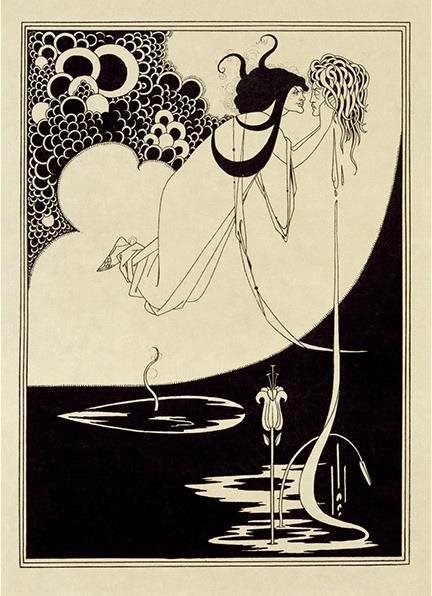
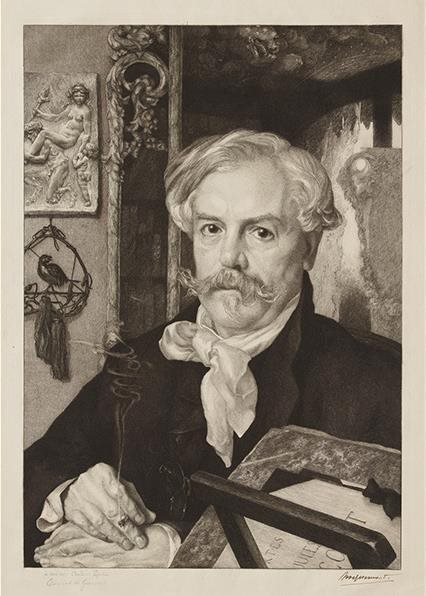
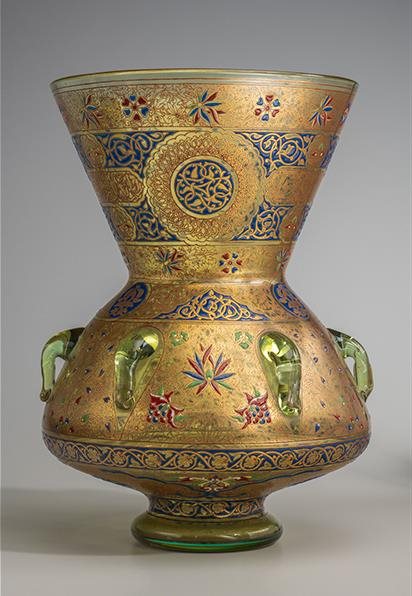



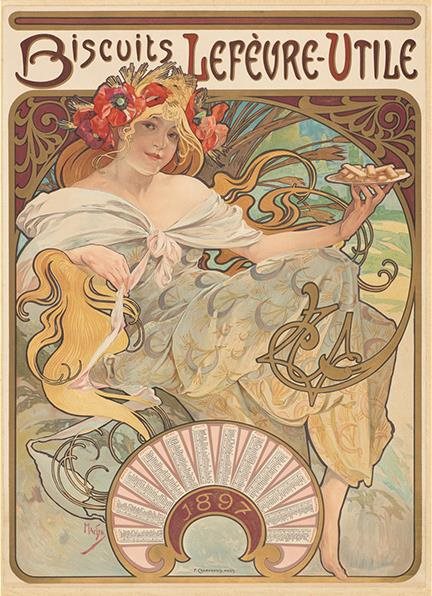
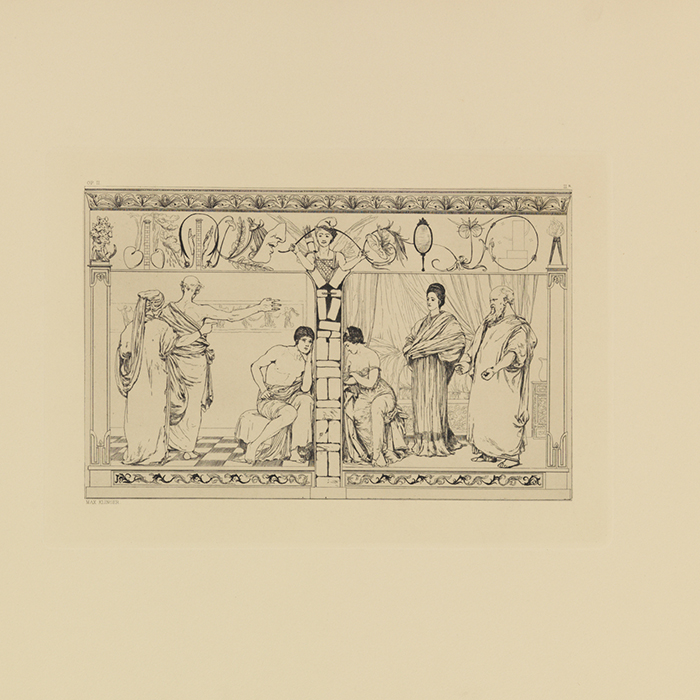
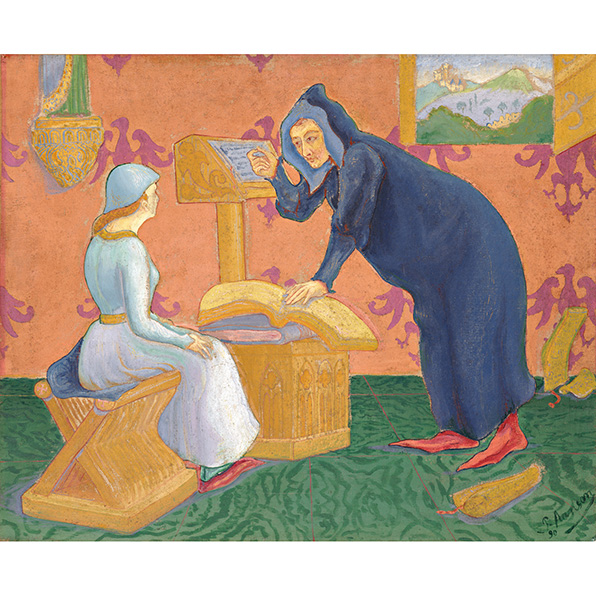
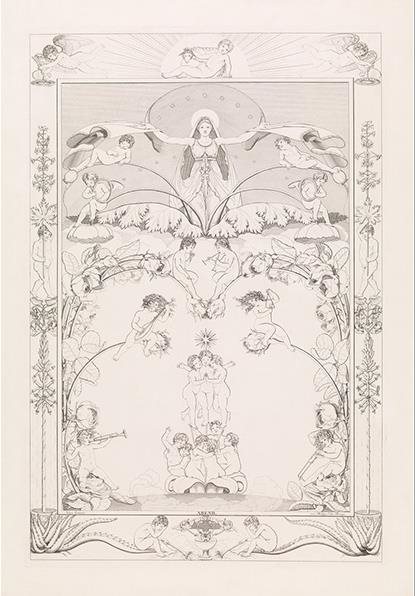
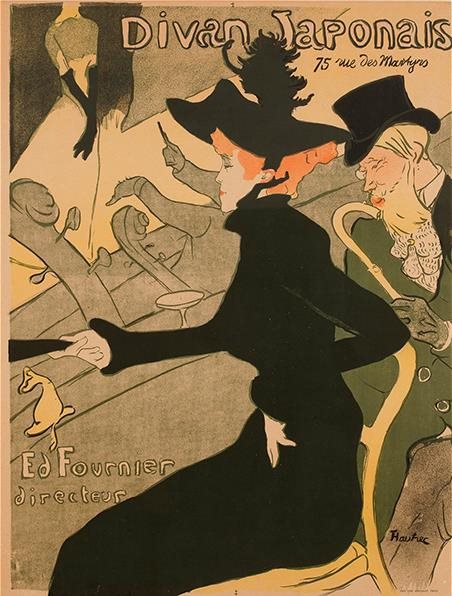











AUBREY BEARDSLEY
ENGLISH, 1872–1898
THE CLIMAX, FROM A PORTFOLIO OF AUBREY BEARDSLEY’S DRAWINGS ILLUSTRATING “SALOME” BY OSCAR WILDE
1907
Before his death from tuberculosis at age twenty-five, Aubrey Beardsley achieved rapid notoriety with licentious and decadent imagery that bulldozed the conventions of Victorian decorum. He made a set of drawings for Oscar Wilde’s Salome, a one-act play whose themes of lust and necrophilia proved too much for the British censors (it was not performed until 1896, in Paris). But if Beardsley’s subject matter attracted controversy, so did his highly original style. The exquisite linework of his black-and-white illustrations, influenced by Japanese prints and heralding Art Nouveau, attained a level of decorative refinement rarely seen before or since.
| MEDIUM | Line block print |
| DIMENSIONS | Image: 9 × 6 3/8 in. |
| ACQUIRED BY | Princeton University Art Museum | Princeton, New Jersey |
| ACCESSION NUMBER | x1939-83o |
FÉLIX BRACQUEMOND
FRENCH, 1833–1914
PORTRAIT OF EDMOND DE GONCOURT
1881
One of the most gifted French etchers of the nineteenth century, Félix Bracquemond was also a devotee of Japanese art, a passion he shared with his friend the writer, collector, and aesthete Edmond de Goncourt. In this penetrating portrait, Goncourt is shown at home, surrounded by his diverse collection of cherished objects. The wafting plume of smoke from Goncourt’s cigarette is an especially virtuosic touch, its arabesque path evoking the pleasures of open-ended leisure and reflection.
| MEDIUM | Etching on paper |
| DIMENSIONS | Image: 17 13/16 x 12 5/8 in. |
| ACQUIRED BY | Clark Art Institute |
| ACCESSION NUMBER | 1969.23 |
PHILIPPE-JOSEPH BROCARD
FRENCH, 1831–1896
MOSQUE LAMP
c. 1880
| MEDIUM | Enameled, gilded, and applied glass |
| DIMENSIONS | 14 13/16 x 10 in. |
| ACCESSION NUMBER | 2013.13 |
| ACQUIRED BY | Clark Art Institute | Gift of Thomas Branchick and Mary Kontarasis in Memory of William Schade |
GEORGES DE FEURE
FRENCH, 1868–1943
LA FEMME FATALE
1896
| MEDIUM | Color lithograph |
| DIMENSIONS | Image: 13 3/4 x 10 1/4 in. |
| ACQUIRED BY | Clark Art Institute | Acquired with funds donated by Jeffrey Shedd |
| ACCESSION NUMBER | 1991.15 |
OWEN JONES
ENGLISH, 1809–1874
PLATE 9 FROM PLANS, ELEVATIONS, SECTIONS, AND DETAILS OF THE ALHAMBRA
1842–45
| MEDIUM | Chromolithograph |
| DIMENSIONS | Sheet: 26 × 19 1/4 in. |
| ACQUIRED BY | Chapin Library, Williams College | Williamstown, Massachusetts |
ADOLPH MENZEL
GERMAN, 1815–1905
THE WILLOW TREE
1843
Adolph Menzel has ingeniously shaped the trailing branches of the willow tree and joined them up with the stalks of ground plants to form a continuous frame around the image. Even as he molds nature to the demands of art, Menzel does not dispense with narrative. As if the central tree, pollarded to a harmonious and elegant extreme, were not enough to hold our interest, the artist stages a scene of chivalric romance, comically watched over by a treetop figure seen from the rear.
| MEDIUM | Etching on white wove paper |
| DIMENSIONS | 9 1/16 x 6 1/8 in. |
| ACQUIRED BY | Harvard Art Museums / Busch-Reisinger Museum | Cambridge, Massachusetts | Gift of Daniel Bell |
| ACCESSION NUMBER | 1987.19 |
ALPHONSE MUCHA
CZECH, 1860–1939
BISCUITS LEFÈVRE-UTILE
1896
The butter cookies of Biscuits Lefèvre-Utile (better known as LU), a nineteenth-century French factory still operating today, are the delicacies being advertised in this poster. Alphonse Mucha deftly blends the swirling hair of his female subject with an abstract border pattern, using gilding to enhance the effect. The soft sensuality of the woman proffering the plate of biscuits is tempered by wholesome rusticity, a strategy calculated to appeal to a wide range of consumers.
| MEDIUM | Color lithograph on paper laid down on linen |
| DIMENSIONS | 24 1/8 × 17 1/8 in. |
| ACQUIRED BY | National Gallery of Art, Washington, DC | Evelyn Stefansson Nef Fund |
| ACCESSION NUMBER | 2016.140.2 |
MAX KLINGER
GERMAN, 1857–1920
PYRAMUS AND THISBE (PYRAMUS UND THISBE) FROM
PRESERVING OVID'S OFFERING
1879
| MEDIUM | Mixed intaglio |
| DIMENSIONS | 8 5/16 x 11 13/16 in. |
| ACQUIRED BY | Smart Museum of Art | The University of Chicago | Gift of the Williams and Flora Richardson Library |
| ACCESSION NUMBER | 1994.9p |
PAUL ELIE RANSON
FRENCH, 1864–1909
ABÉLARD AND HÉLOÏSE (THE LESSON)
1890
The arabesque background to Paul Ranson’s painting offers a foil to the ostensible subject, the medieval lovers Abelard and Heloise. The conflict of styles is apparent in Ranson’s effort to reconcile the decorative flatness of the arabesque design with the physical mass of the figures, themselves outlined in archaizing fashion. Ranson’s use of a repeating ornamental motif is an apt reminder of his training as a decorative artist who made tapestry designs, stained glass, and ceramics as well as paintings. He was a central figure in the Nabi group of artists, hosting meetings in his Paris apartment (nicknamed “the Temple”) and introducing esoteric rituals including a secret Nabi language.
| MEDIUM | Oil on canvas |
| DIMENSIONS | 19 3/4 × 24 in. |
| ACQUIRED BY | Wadsworth Atheneum Museum of Art | Hartford, Connecticut | Gift of Samuel Josefowitz |
| ACCESSION NUMBER | 1960.393 |
PHILIPP OTTO RUNGE
GERMAN, 1777–1810
EVENING, FROM THE SERIES THE TIMES OF THE DAY
1807
Philipp Otto Runge’s suite of four allegorical engravings is at once a hymn to nature and a spiritual vision, referring to not only the times of the day but also the seasons of the year and of human life. For such an ambitious and esoteric subject, Runge adopted a style that offers superficial resemblances to Antoine Watteau’s design but also profound differences. Vegetal and figural elements fill the frames, and principles of symmetry and decorative profusion govern all four images. Yet the artist keeps each composition on a symbolic level, with few elements that could be called realistic. Monumental in scale, the prints are bounded, self-enclosed worlds. By sacrificing some of the free-flowing, open-ended aspects of arabesque, Runge channels this formal device into a decisive generator of all-over composition.
| MEDIUM | Engraving, second state of two |
| DIMENSIONS | Plate: 27 15/16 × 18 5/8 in. |
| ACQUIRED BY | The Metropolitan Museum of Art | New York, New York | Janet Lee Kadesky Ruttenberg Fund, in honor of Colta Ives |
| ACCESSION NUMBER | 2007.130 |
HENRI DE TOULOUSE-LAUTREC
FRENCH, 1864–1901
DIVAN JAPONAIS
1893
This advertising poster for the Divan Japonais, a cabaret that attracted the bohemians and hangers-on of Montmartre’s lively night life, prominently features the silhouette of one of its star dancers, Jane Avril, portrayed seated rather than performing. The elegance of Jane’s upright form chimes with the virtual symphony of arabesques surrounding her: the curved back of her chair, her companion’s hat and cane, the scrolls of the double basses in the pit orchestra, the hands of the conductor, the performer onstage—and so on.
| MEDIUM | Color lithograph |
| DIMENSIONS | 31 3/4 x 23 1/2 in. |
| ACQUIRED BY | Smart Museum of Art | University of Chicago | Bequest of Louise H. Landau |
| ACCESSION NUMBER | 2003.69 |

Featuring an essay by Anne Leonard, Manton Curator of Prints, Drawings, and Photographs, Arabesquetraces the role of this curvilinear decorative motif through a variety of styles and media in European art. An elegant companion to the exhibition, this sixty-four-page softcover publication includes fifty-seven color illustrations highlighting objects from the show and their influences.